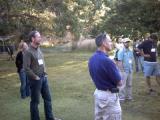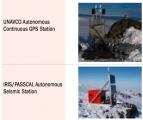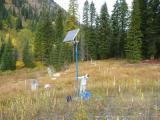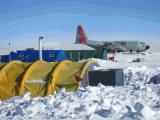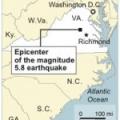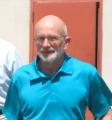
On March 28th, 2012, a beautiful Spring day, staff from the IRIS/PASSCAL Instrument Center, Incorporated Research Institutions for Seismology (IRIS), US Geological Survey, Sandia National Labs, and students assembled for the surprise dedication of the IRIS/PASSCAL Instrument Center seismometer testing vault to Jim Fowler, founding Program Manager for IRIS/PASSCAL (see "IRIS/PASSCAL Celebrates Career of Jim Fowler", March 9th, 2012).
Before a large gathering of more than 75 people, Bob Woodward, IRIS Director for Instrumentation Services emceed a series of speakers that included Rick Aster of NMT/EES and David Simpson, President of IRIS. David Simpson presented Jim's wife, Cynthia, with a bouquet of flowers in recognition for her contribution during Jim's 25 years of service. Jim was then invited to the podium, where he thanked the staff of IRIS/PASSCAL and IRIS for "the easiest job he has ever had."

